A BIRTHDAY SALUTE to a writer who had a crucial role in creating Captain America’s greatest villain, Batman’s “New Look” — and so much more…
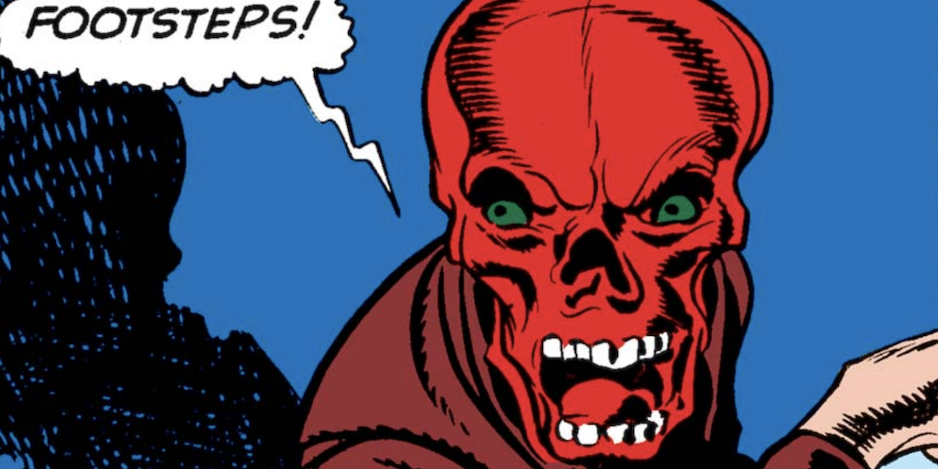
By PETER BOSCH
The late France Edward Herron (born July 23, 1917 or 1918), sometimes known as “Ed Herron” or “France Herron,” was a writer of many accomplishments, though today his name itself is unknown by many comic book fans. He was born in Ohio but raised in West Virginia and sought to make a living writing comics while still young. He landed his first job in the industry in 1937 with the Harry “A” Chesler group, which helped publishers by creating packages of comic book stories, artwork, and covers.
Herron’s writing appeared in titles from Centaur Comics, but his career took off when he met Joe Simon and Jack Kirby at Fox Features Syndicate in 1939.
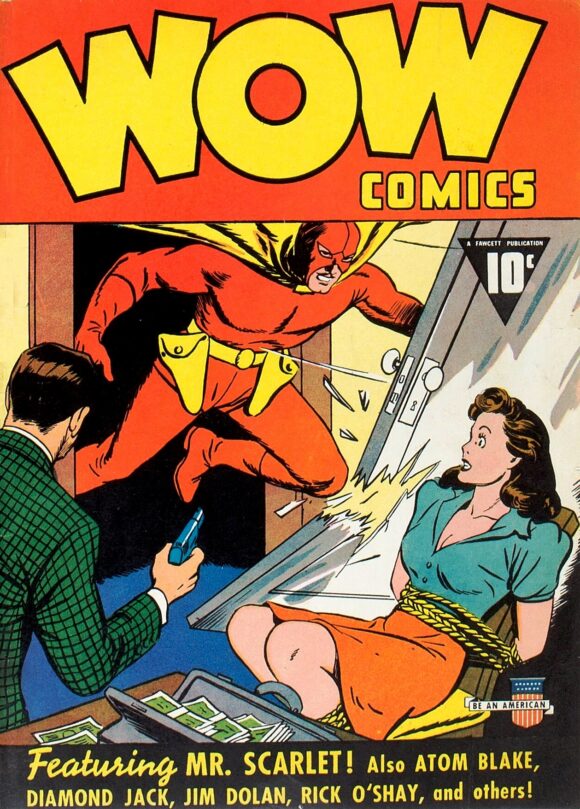
Wow Comics #1 (Winter 1940, Fawcett) — art by C.C. Beck
In addition to Herron co-creating Mr. Scarlet in Wow Comics #1 (Winter 1940) for Fawcett with Kirby (though C.C. Beck claimed to have come up with his look), they hired him to write stories for their new Timely (later Marvel) comic book, Captain America Comics, and in the first issue (Mar. 1941), Herron created one of the greatest villains in all of comic history.
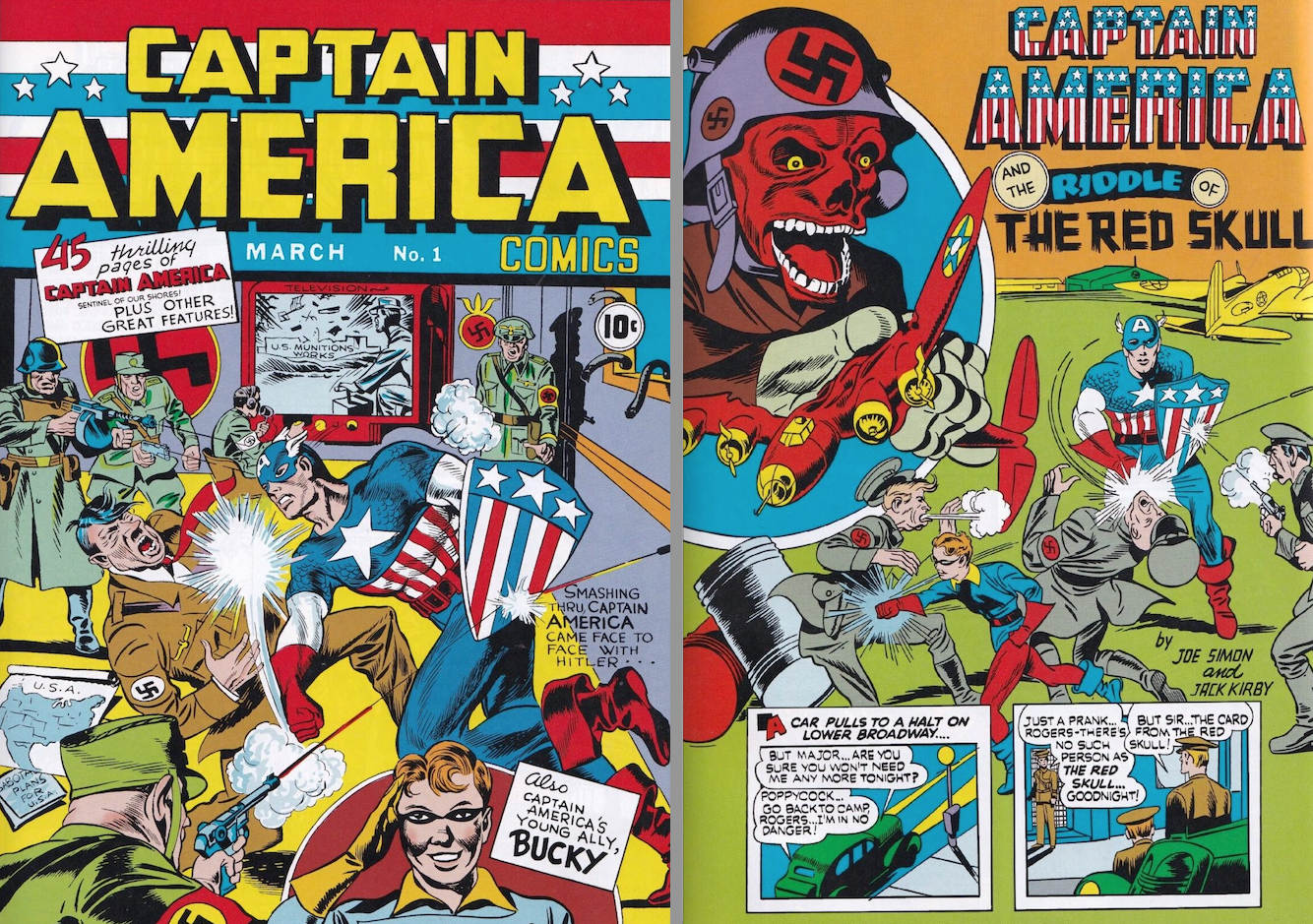
Captain America Comics #1 (Mar. 1941, Timely) — art by Simon and Kirby; script by Ed Herron
“Eddy Herron… created the Red Skull,” Kirby stated in an interview that appeared in RBCC #81 (later reprinted in The Jack Kirby Collector #18, TwoMorrows Publications). As if that wasn’t enough, a few months later Herron co-created Captain Marvel Jr. with Mac Raboy in Whiz Comics #25 (Dec. 1941, Fawcett).
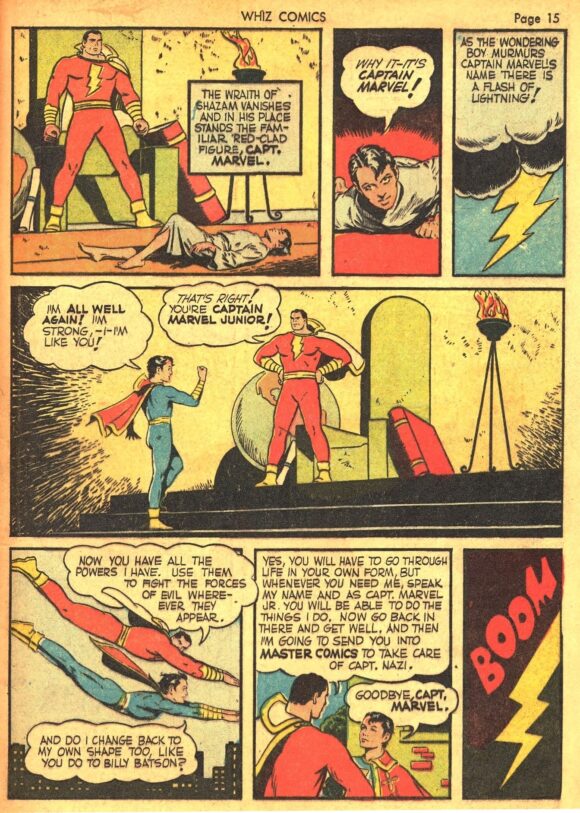
Whiz Comics #25 (Dec. 1941) — plot by Ed Herron, script by Bill Woolfolk. Art for Captain Marvel by Beck; art for Captain Marvel Jr. by Mac Raboy
In 1942, as the editor of many of the Fawcett titles, he brought the idea of “Mary Marvel” to artist Marc Swayze. However, Herron was soon discharged by the Fawcetts because they discovered that – instead of just being an editor as they wanted – he continued to write several stories (under a pseudonym) and paid himself for them. (For more details on this, Michael Browning’s excellent article in Alter Ego #155 is recommended reading.)
But writing wasn’t all Herron did. His friendship and advice led one person to a lifetime of greatness in the comic book industry. The friend’s name was Curt Swan.
During World War II, Herron was assigned to the London office of the Army’s newspaper, Stars and Stripes, where he met Swan, one of the illustrators on staff. After the war, he met up with Swan in New York, where the illustrator had moved in hopes of breaking into an industry with his art skills. Swan later acknowledged it was Herron who suggested he take his work to National Periodical Publications (lDC), where Herron was writing comic book stories. Swan did and worked for them for the next 50 years or so, becoming known to his fans as the Superman artist.
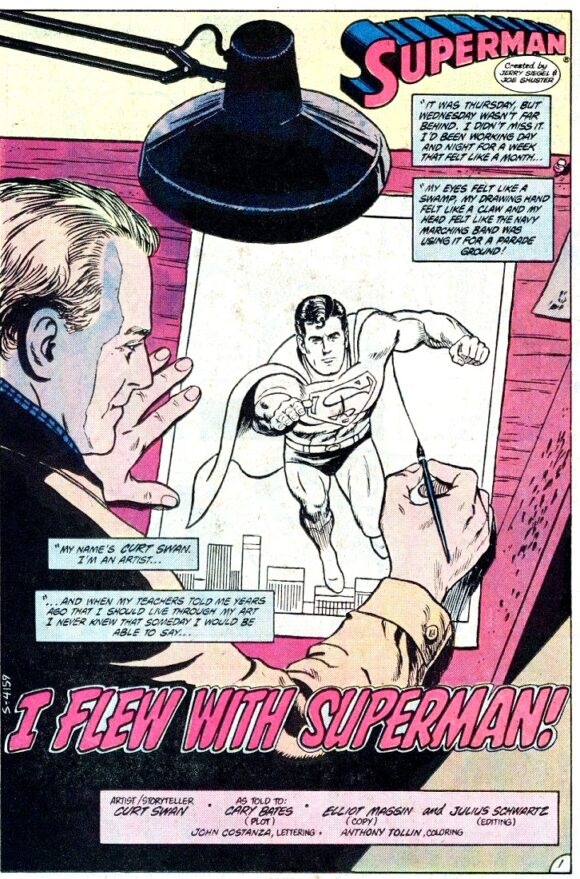
Superman Annual #9 (1983) — art by Swan; plot by Swan and Cary Bates, with script by Elliot S! Maggin
Herron himself was very busy with writing comics for DC. During the mid-to-late-1940s, Herron was writing scripts for the Boy Commandos, the Newsboy Legion, Green Arrow, Slam Bradley, and the Vigilante. In addition, he was also writing for two DC comic book series based on popular radio programs, Mr. District Attorney and Gang Busters — and he appeared on this photo cover of Gang Busters #10 (June-July 1949) as the policeman! (Jack Schiff was the crook.)
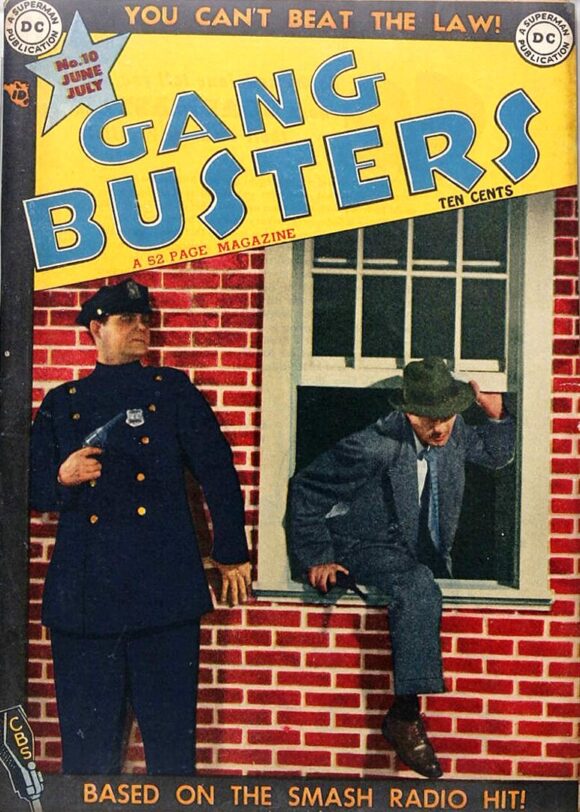
Gang Busters #10 (June-July 1949)
However, Herron’s workload in the 1950s and into the 1960s at DC far surpassed anything he had done until then, including writing for titles such as Superman, Superboy, Danger Trail, Star-Spangled Comics, Star-Spangled War Stories, Tales of the Unexpected, Tomahawk, All-Star Western, All-American Men of War, Strange Adventures, Mystery in Space, G.I. Combat, Our Fighting Forces, Western Comics, Robin Hood Tales, and Challengers of the Unknown.
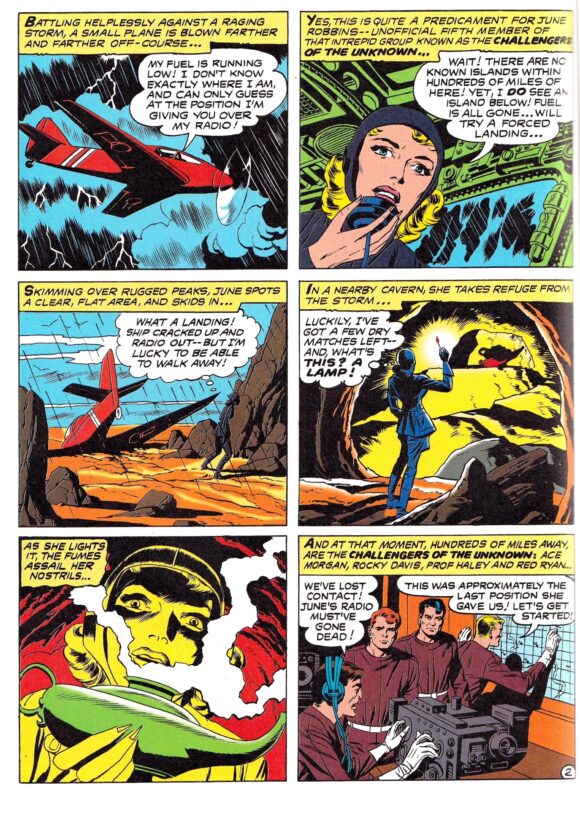
Challengers of the Unknown #6 (Feb.-Mar. 1959) — art by Kirby (pencils) and Wallace Wood (inks); script by Herron and Kirby
During that same period, he co-created the Golden Gladiator with Russ Heath, which started in the first issue (Aug.-Sept. 1955) of The Brave and the Bold, as well as the Firefly with Dick Sprang in Detective Comics #184 (June 1952) and did the same with Lee Elias in co-creating the Clock King (the Green Arrow villain, not the TV Batman bad guy played by Walter Slezak) in World’s Finest Comics #111 (Aug. 1960). In the same month of the Clock King’s first appearance, Herron’s newest hero, Cave Carson, debuted in The Brave and the Bold #31 (Aug.-Sept 1960), co-created with Bruno Premiani.
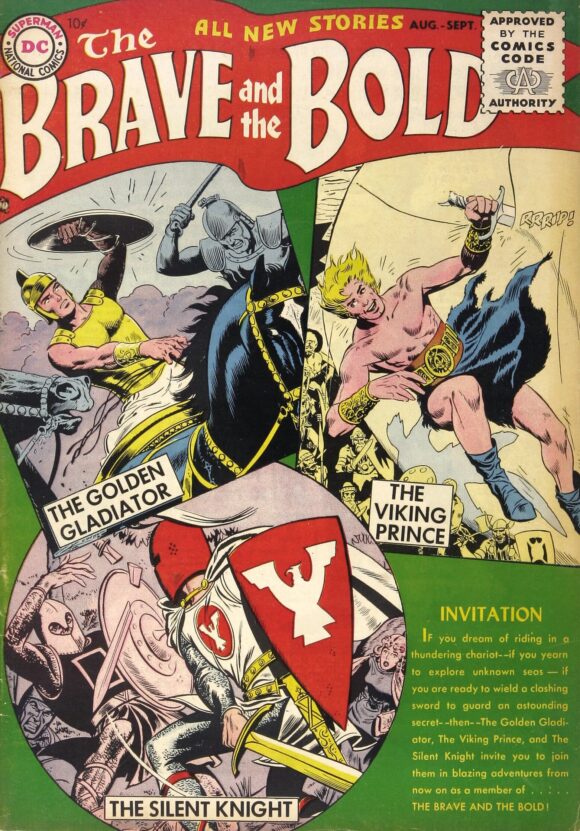
The Brave and the Bold #1 (Aug.-Sept. 1955) — cover art by Russ Heath (Golden Gladiator), Joe Kubert (Viking Prince), and Irv Novick (Silent Knight)
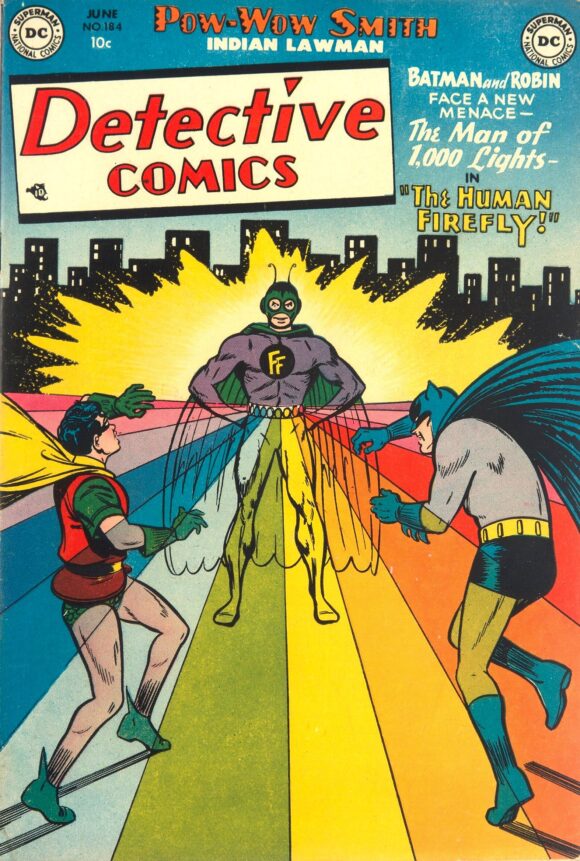
Detective Comics #184 (June 1952) — cover art by Win Mortimer
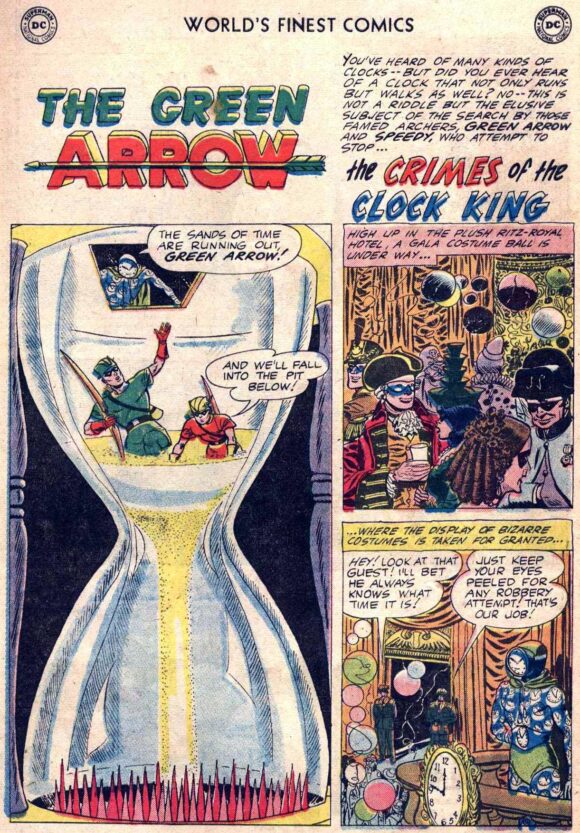
The Green Arrow splash page from World’s Finest Comics #111 (Aug. 1960) — art by Lee Elias; script by Herron
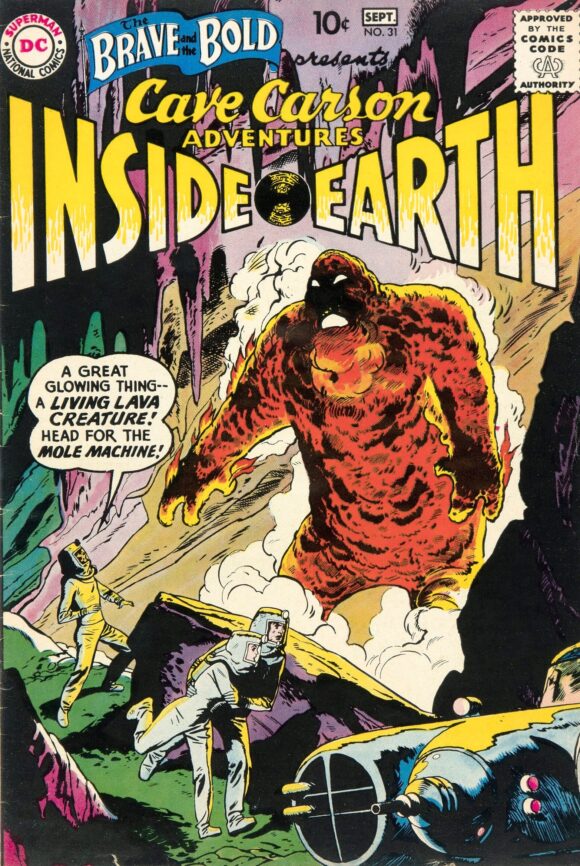
The Brave and the Bold #31 (Aug.-Sept. 1960) — art by Bruno Premiani
One thing worth mentioning was that during the 1950s and early 1960s, he was also involved in the writing of the newspaper comic strips of Bat Masterson, Davy Crockett Frontiersman, and Nero Wolfe. (He had also written a Captain Midnight strip in the early 1940s!)
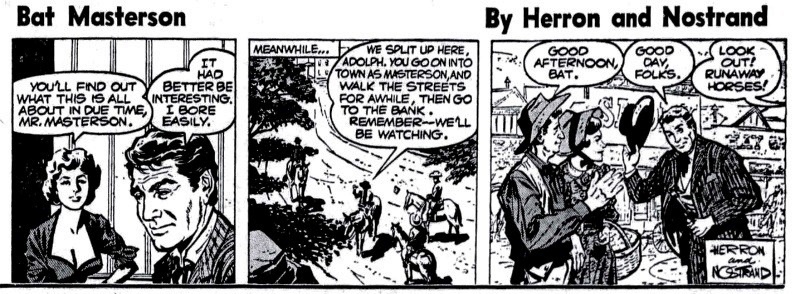
Bat Masterson daily newspaper comic strip — script by Herron; art by Howard Nostrand (note the resemblance to the TV program’s star, Gene Barry)
In 1964, Julius Schwartz called upon Herron to write the first two “New Look” Batman stories, which appeared in Batman #164 (June 1964). As mentioned in the letter column of Batman #167 (Nov. 1964), though Detective Comics #327 (May 1964) was on the newsstand first, the stories Herron wrote for Batman #164 were chronologically ahead of it.
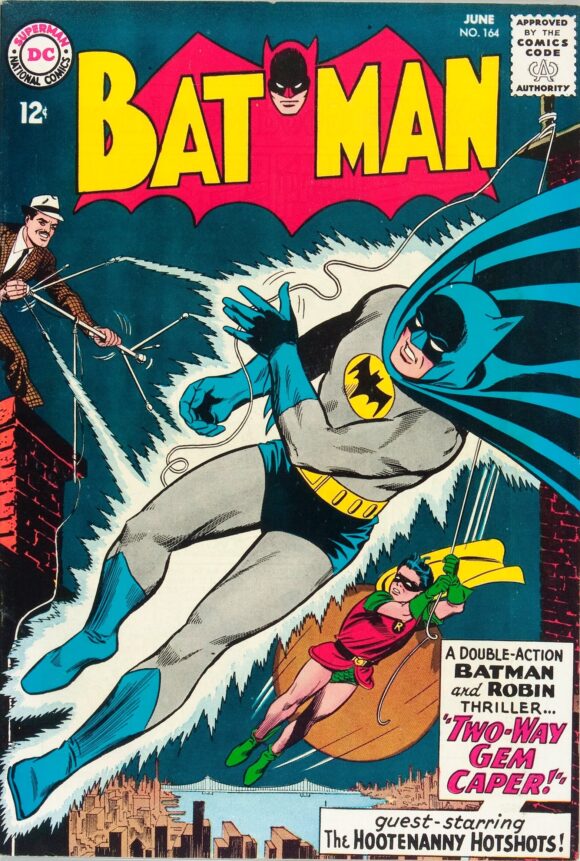
Batman #164 (June 1964) — art by Sheldon Moldoff and Joe Giella
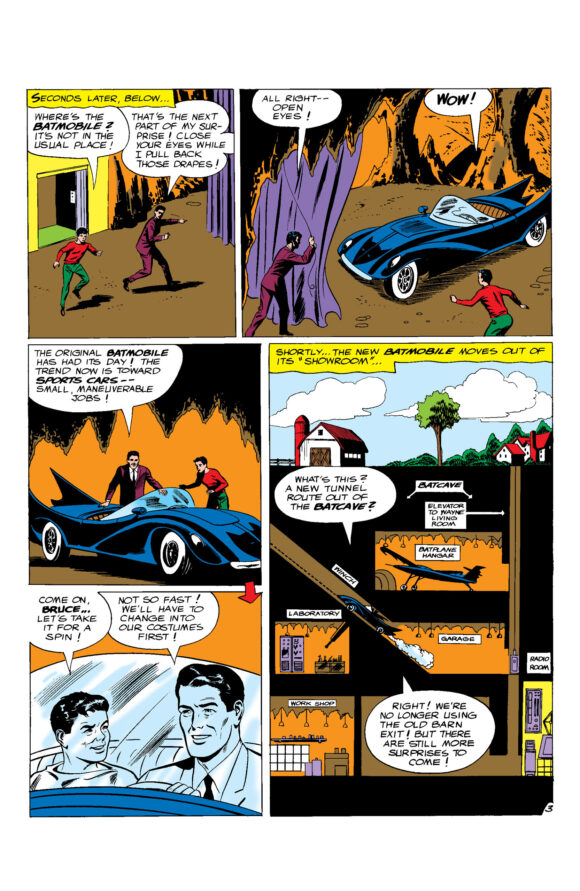
Batman #164 (June 1964) — art by Sheldon Moldoff and Joe Giella; script by Herron
Herron left DC in 1965 and worked on scripts for a few Harvey Comics characters, including Spyman, the Glowing Gladiator, and Jack Q. Frost.
In 1966, while still in his 40s, Ed Herron died from cancer.
—
MORE
— Class in Session: THE DC COMICS SCHOOL OF ART Is Now Open. Click here.
— The WEIRD WORLDS OF MURPHY ANDERSON. Click here.
—
13th Dimension contributor-at-large PETER BOSCH’s first book, American TV Comic Books: 1940s-1980s – From the Small Screen to the Printed Page, was published by TwoMorrows. He is currently at work on a sequel, about movie comics. Peter has written articles and conducted celebrity interviews for various magazines and newspapers. He lives in Hollywood.
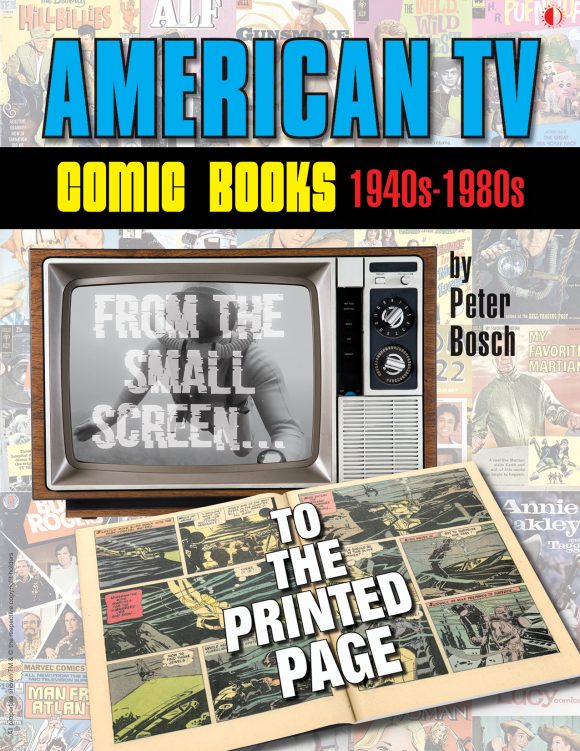

July 23, 2024
I wonder what else Herron created that was credited to Kirby
July 23, 2024
Hi, SJG. I can think of a few who took credit where credit was not due — but I don’t believe that about Jack Kirby. He gave credit to Herron for the Red Skull. When it comes to the business of comics, there is often a lot of fighting over who gets credited for the creation of a successful character (usually due to later financial compensation). But, in my opinion, when it comes to Jack Kirby, I think he isn’t even half-recognized for tings that started with him.
July 23, 2024
Nice overview of someone who missed the acclaim he should have gotten from comics fans.
July 23, 2024
Some great comic history there. I’ll admit not a name I was familiar with too well but certainly should have been. A lot of stories there I recognize. Peter, you need to write for TwoMorrows.
July 23, 2024
Thanks, Buck. I already have and do. My book “American TV Comic Books: 1940s-1980s – From the Small Screen to the Printed Page” (see above) is from TwoMorrows, and my recent article on Modesty Blaise was for RetroFan #33, also TwoMorrows. In addition, I am working on a sequel to the TV book, this time about motion pictures adapted to comic books.
July 23, 2024
Thanks for the fascinating deep dive on Herron, Peter. I was aware of some of his work, but not all of these accomplishments!
July 25, 2024
Thanks for your kind words.